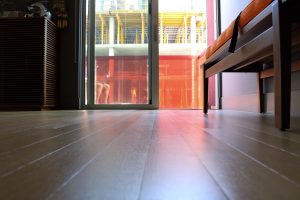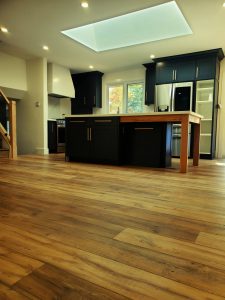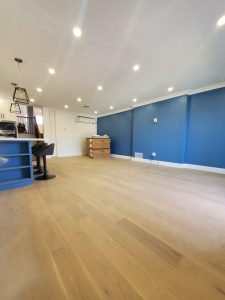A Simple Guide to Hardwood Flooring: Types and Considerations

Photo by Reilly Smith
Find excellent tiling and engineered hardwood in Hamilton, Ontario, from 7G Contracting’s access to the best flooring suppliers and commitment to quality construction materials.
Wood flooring is a perennial style and has been for centuries. Naturally resilient, ecologically sound, and renewable, wood is the most sustainable option for flooring anywhere. And among wood flooring, hardwood is easily the most lasting. The oldest hardwood floor still in existence, the flooring in the Braman-Nothnagle Log House in New Jersey has been around since the early 1700s, decades before the American Revolution!
Visually attractive and structurally durable, hardwood is quite the popular choice for construction. Hardwood is usually wood that comes from trees whose seeds produce a coating in the form of a fruit or a husk. It is used in constructing furniture, doors, building frames, tools, and flooring.
Hardwood is sturdy and fit for craftsmanship because the wood fibers are compact and have resilient surfaces. So, if you’re looking for quality tiling and engineered hardwood in Hamilton Ontario, for a residential space, 7G Contracting has the channels for you.
Of course, before you pick up that phone or type out that email, you must know how many hardwoods there are and what considerations you have to consider.
What Types of Hardwood Are Out There?

Hardwoods are more durable and have a higher density than softwoods, offering better strength and applicability regarding resistance and resilience. They also have extended longevity and are appropriate for joinery, cladding, furniture, staircases, and flooring. Popular hardwoods are American white oak and European oak because of their accessibility and availability to most buyers.
Hardwoods are generally classified into three main types:
- Tropical hardwoods come from angiosperm trees, whose seeds are encased in shells and are classified as tropical. They are well-known for their exotic quality and are typically sourced from the tropics, specifically in South American, Asian and African countries, because of their durability and sustainability. Tropical hardwood is available in various hues and textures, from orange to brown.
- Examples of tropical hardwoods are Tatajuba, Red Louro, and Sapele.
- Temperate hardwoods are sourced from East Asian, European, western Russian, and North American forests. Soft hardwoods are processed from three main kinds of trees: deciduous trees, such as maples, chestnuts, and elms; coniferous trees, such as pines, firs, and cedars; and broad-leaved evergreens, such as olive, holly, and eucalyptus.
- Examples of temperate hardwoods are American walnut, Tulipwood, and American Red Oak.
- European hardwoods are those hardwoods that come from oaks and beeches. European hardwood has been a staple for creating furniture for centuries. They are highlighted in many United Kingdom places and ubiquitous in furniture stores and showrooms. Germany, France, and Croatia are the leading suppliers of European hardwood.
- Examples of European hardwoods are European Prime Oak, European Prime Beech, and Green Oak.
What Are the Advantages of Choosing Hardwood as Construction Material?

There are many benefits of having hardwood as a material for construction. But to help you narrow it down, here are four qualities you need to consider seriously before taking your pick:
- Appearance. Hardwoods can match any number of styles and themes; this is because they come in a variety of textures, patterns, and tones, depending on the species of hardwood chosen. Although primarily warm, with the correct combination, hardwood flooring provides a diversity of depth and visual aesthetic.
- Cost. Although generally expensive, hardwood more than delivers beyond its price range. Compared to cheaper alternatives, hardwood lasts longer, is extremely tough, and can withstand wear for many years. Maintenance costs are also minimal since hardwood flooring only needs to be waxed occasionally.
- Maintenance. A significant advantage of hardwoods is their resilience and simplicity. These attributes make hardwood a trendy material for flooring since its surface is easy to clean and maintain without needing additional tools. Simply wiping it down can keep a hardwood floor polished and beautiful for many years. Hardwood floors are also comfortable because of their natural warmth. They are also appropriate for furniture and walking on. Hardwood floors rarely need replacing, and homeowners can quickly fix any blemish on the surface through sanding, varnishing, or waxing.
- Strength. Hardwoods are durable and resilient, but depending on the species, they also offer a high degree of flexibility, providing a range of applications such as fuel, boat building, cooking, and charcoal manufacturing. Hardwood is also quite resistant to attacks from insects and blunt force.